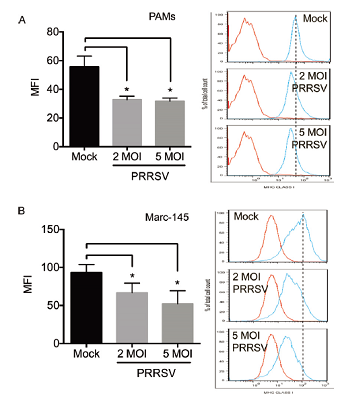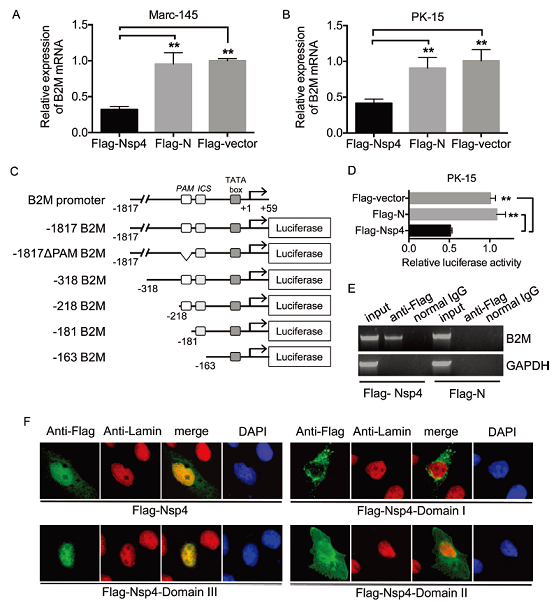
Recently, The Porcine Respiratory Syndrome Innovation Research Team, led by Prof. Zhiyong Ma, has revealed a new mechanism for the inhibition of antigen presentation by highly pathogenic porcine reproductive and respiratory syndrome virus (HP-PRRSV). This study provides new insights for further understanding of the immunosuppression and immune escape mechanisms. Research results were published on Journal of Virology online.
Porcine reproductive and respiratory syndrome virus (PRRS) is one of the most important diseases which impair the global pig industry. PRRSV has a variety of strategies to evade and inhibit the immune clearance of the host.
The Porcine Respiratory Syndrome Research Team from Shanghai Veterinary Research Institute conducted an in-depth study of PRRSV-induced host immune suppression and immune escape mechanisms. Researchers started from SLA-I which is a critical molecules in the inhibition of host immune response caused by PRRSV (Figure 1), analysised the host cell signaling pathway effected by PRRSV. It was found that PRRSV infection caused a down-regulation of B2M, whereas B2M regulated the expression of SLA-I molecules (Fig. 2). In addition, the key regions of B2M were analyzed by constructing different active regions of Nsp4. It was confirmed that Domain III was the key region for Nsp4 to inhibit B2M transcription (Fig. 3).


Fig 1 PRRSV inhibits the expression of SLA-I molecules on cell surface


Figure 2 PRRSV inhibits the transcription of B2M


Figure 3 Nsp4 Domain III is the key region to inhibit the transcriptional activity of B2M
SLA-I is one of the most important acquired immune molecules in swine. SLA-I plays an important role in cell-mediated immunity during viral infection. PRRSV inhibited SLA-I is an important issue in the study of PRRSV, but its mechanism of action has not been revealed. This study clarified the problem that PRRSV inhibits host SLA-I, and analyzes the mechanism by which PRRSV uses its own protein to control SLA-I expression in host cells from the molecular and cellular level.
The results of this study can help to analyze the complex immune suppression and immune escape mechanism of PRRSV, which can guide the research and use of PRRSV vaccine, and also have a reference role in clinical treatment of PRRSV infection.
Paper link:
http://jvi.asm.org/content/early/2016/12/15/JVI.01755-16.full.pdf+html




